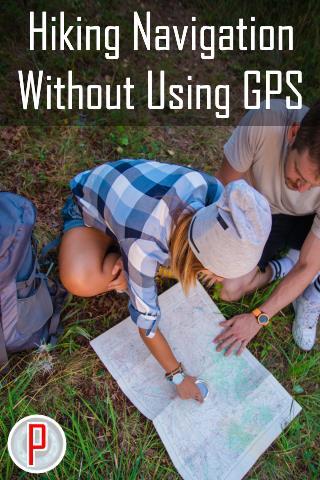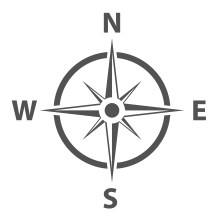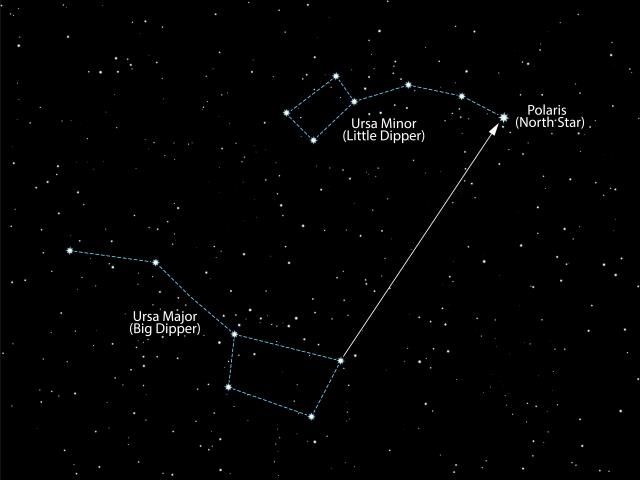
In this day and age of cell phone and mobile devices it's easy to forget that people did get around without these electronic tools. Years ago, people couldn’t rely on their smartphones when they got lost. There was no GPS when you went camping for the weekend. Before the advent of these tools, we actually had to know how to use things like a compass and a map.
It’s important that you have basic navigation skills. Even if it’s just so you can find out way out of the woods on a fall evening. You don’t have to be a scout to learn basic navigation skills. All you need is a map, a compass or a couple of sticks! This guide will teach you the rudimentary skills needed for successful navigation.
Contents
- How to Find Your Way Without a Compass
- How to Use a Compass - Understanding Magnetic Declination
- Finding Your Location: Triangulate Using a Compass
- Prepare To Find Your Way Out If You Get Lost
How to Find Your Way Without a Compass
Not everybody carries a compass in their back pocket. In fact, I don’t think I know a single person who does. Part of this is because we have come to rely on apps and cell phones. Another reason is that a lot of people don’t know how to use a compass – or, they just have never needed one before. So, if you find yourself stranded in the woods at night and have no idea which way is up, you can use these navigation tricks to find your way back home.
Use the North Star as a Guide
Just like the sailors of old, you can use the stars to guide you home. If you can find the Big Dipper in the sky, then you can find the North Star. If you look at this cluster of stars, you will see the bright star that is the North Star. Once you are able to identify the North Star, you can then determine where you are at. Follow a line from the North Star to the ground and that will be north. The general directions, if you aren’t familiar, are as follows -

This is how you can find the North Star - note that The Big Dipper is also called Ursa Major and it points to the North Star, also called Polaris, in the Little Dipper which is also called Ursa Minor as labelled in this image:

Using 2 Sticks at Night to Guide You
You want to gather two sticks – one short and one tall. Line these sticks up with any stars you see. Just pick two random stars and match the two sticks to the positions of these stars. Wait about 5 minutes. Then check to see where the stars are in relation to the sticks. If they have moved to the left, you are facing North. The direction they are facing will tell which way is which. Here is a clue as to which direction you are facing based on movement of the stars.
- Up – Facing East
- Down – Facing West
- Left – Facing North
- Right – Facing South
If you get lost along the way back to your tent or car, you can repeat this trick as many times as necessary.
Use the Crescent Moon at Night to Show the Way Back Home
The crescent moon is the half moon. If you trace the bottom of the crescent moon to the horizon, you will find a fixed point. If you are in the North Hemisphere, this point is going to be in the southern direction. Use this point as a reference to figure out your way east, west and north.
Old School Analog Watch
This one is a little more complicated than the others. Here, you need to have an old school analog watch. This means a watch with an hour hand and a minute hand. You are going to want to point the hour hand directly at the sun. You are then going to want to find the halfway point between this hour hand and the “12” on your watch face. This mid-point is going to be South. You can use this to make your way in any direction necessary.
Use Your Natural Surroundings
You can use some common sense to find your way home. For example, the heavy side of trees face South. This is because of the way the sun hits the leaves and keeps one side lighter and drier. So, look for the heavier side of the leaves on a tree and you will find the Southerly direction.
Look for moss growing on trees. Moss tends to grow better in shaded areas, so when you are at higher latitudes away from the equator, most of the moss will grow on the side of trees that gets the least direct sunlight. In the northern hemisphere most of the moss will be on the north side, and the opposite is true in the southern hemisphere.
For all of these techniques, all you need is yourself and nature (with the obvious exception of the analog watch). If you are planning a trip, you will want to practice these tricks prior to leaving. As simple as they are, you don’t want to be totally inexperienced and find yourself lost in the woods at night.
How to Use a Compass - Understanding Magnetic Declination
Everyone has heard of a compass, but not everybody knows how they work. Few know how to use them. The basic rationale behind a compass has to do with magnets. A compass is just a magnetic needle that is positioned in such a way that it can move freely in a circle. The needle will spin until it is in a position where one side faces magnetic north and the other faces magnetic south. If you’re not sure which way it is facing, use what you know about the Sun. The sun sets in the west and rises in the east. So, use this information to tell which end is pointing north.
To be a little more specific, the reason the compass points north and south is because it is reacting to the Earth’s magnetic field. Each magnet has two poles: north and south. The compass needle will align with the Earth’s magnetic field to reflect these two positions.
Keep in mind, there is magnetic north, and then there is true north, which is what maps use. The difference between these two points is what is referred to as magnetic declination (also called magnetic variation). What you do is add the magnetic declamation for your location to magnetic north on your compass to find true north. Topographical maps supplied by the US Geological Survey provide the magnetic declamation for the areas covered by the map. You can also use an online tool before leaving home to find the value for the area you'll be hiking in.
Magnetic declination apps are also available for iOS and Android if you really have to use an electronic device - but note that these apps typically use GPS to find your location.
The following video shows you how to use your compass to find true north:
Finding Your Location: Triangulate Using a Compass
Before you figure out which way to go, it helps to know where you are. Triangulation is a process where you use three different easily identifiable features that you can locate on your map to figure out where you are using a compass. The following video mades the process easy to understand:
Prepare To Find Your Way Out If You Get Lost
If you find yourself lost in the woods, don’t panic. Our first natural tendency is to get scared and panic. However, all this is going to do is make it harder for you to find your way home. You want to stay calm and collected. There is nothing you can do to make the situation better so just deal with it.
Use the tricks above to try to make your way home. If these aren’t options (based on weather or tools) there are things you can do to find you way home safely. Before you leave, spend a couple of hours taking note of where things are: roads, highways, creeks, paths, etc. Be very specific. You will have noticed things along your hike that should be clues as to how to get back.
Some of the things you want to look for are:
- Directions creeks and waterways flow. If you write this down it will be very easy to determine your direction.
- Where are the major roads? Listen for sounds of cars on the road or highway. If you have this information noted on a piece of paper, you can refer to it if you do get lost.
- What mountains and peaks are near you? If you have this information, it will help you make your way back to safety.
Now that you have your basic navigation skills finely honed, it’s time to plan your next trip! Don’t be afraid of nature. It’s been kind to us for longer than we can remember.

